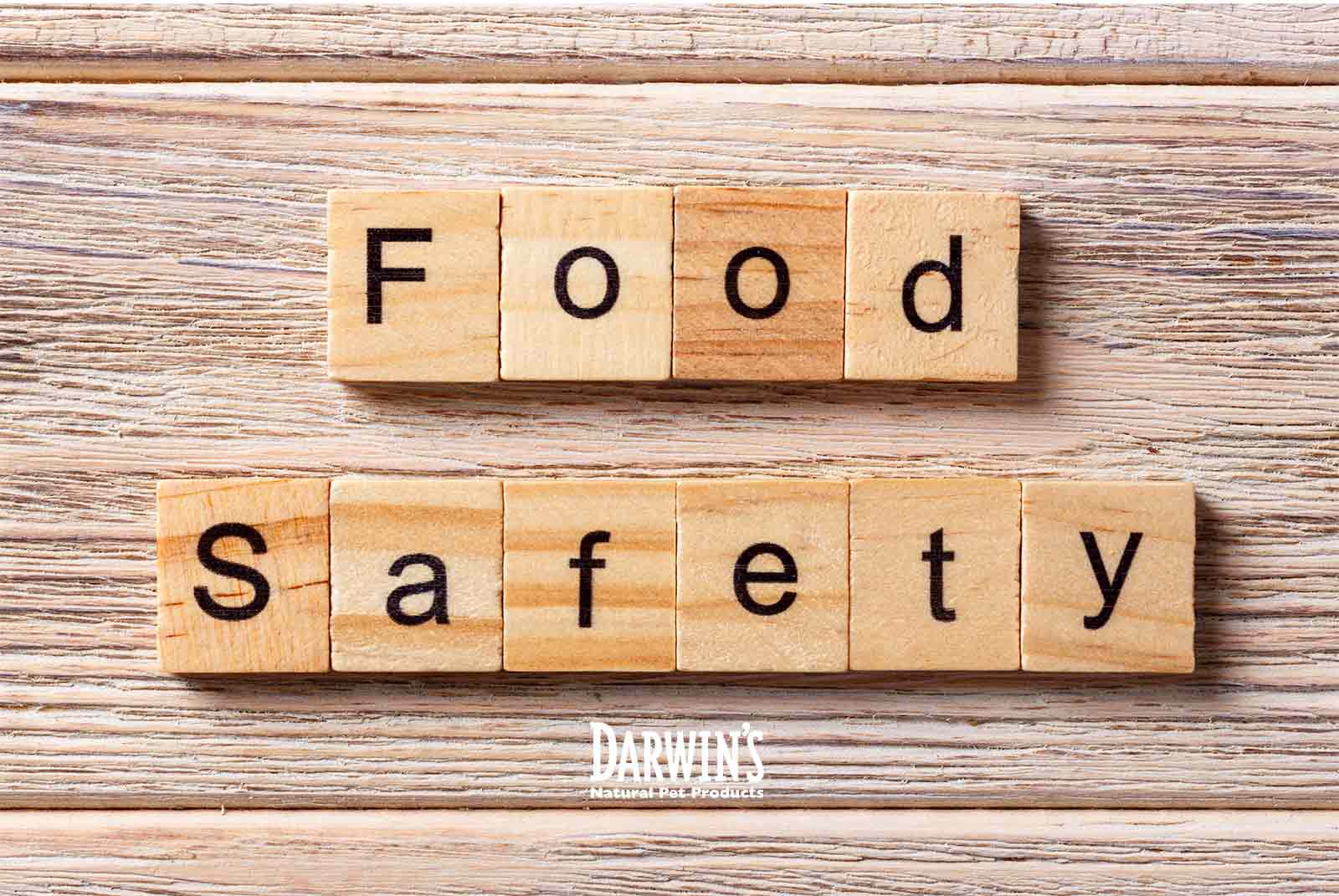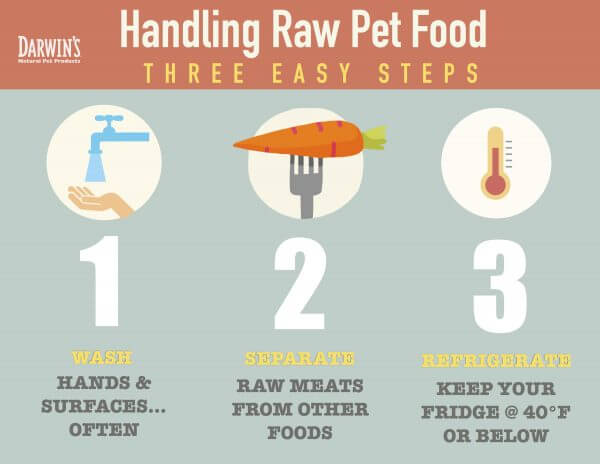Raw Pet Food Safety Tips
5/31/16

Raw Pet Food Safe Handling Tips
Wash, Separate, Refrigerate
Raw pet food uses the same ingredients found in the average grocery store. This means the raw meat you feed your pet should be handled the same way you would handle raw meat for the rest of your family. Here is our simple guide to safely handling raw pet food.

Wash Hands and Surfaces Often
Wash your hands with warm water and soap for at least 20 seconds before and after handling raw food. Wash your dog dishes after each meal with hot soapy water before you prepare other food. Consider using paper towels instead of cloth towels or sponges. If you are using cloth towels or sponges, replace them often. Here are some extra tips:
- Use stainless-steel bowls for feeding any raw product. Other materials such as plastic and porcelain can be porous and may trap germs over time. If using plastic, replace bowls often.
- When you clean up, try using two different colored sponges in the kitchen: one for cleaning your dishes and another for cleaning your pet’s dishes.
Separate Raw Meats from Other Foods
After serving a thawed meal portion of food, immediately place any remaining thawed meal portions into the refrigerator, using the thaw tub provided. Make sure no raw meat in your fridge is touching other food to prevent cross-contamination.
Refrigerate 40ºF or Below
According to the USDA’s Food Safety and Inspection Service (FSIS), “bacteria grow most rapidly in the range of temperatures between 40 and 140 °F,” some cells doubling in number in as little as 20 minutes. A refrigerator set at 40 °F or below will protect most foods. Your freezer temperature should always be 0ºF or below. Keeping raw food frozen at a consistent temperature of 0 °F will prevent the growth of bacteria.
Thaw raw food in your fridge for 24-48 hours in a covered glass, steel, or BPA-free container.



